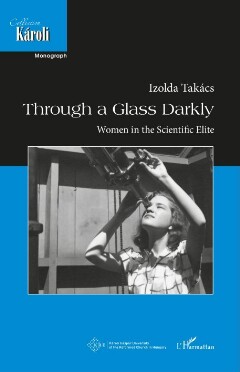

OCR
INTRODUCTION ——o— While there is no legal barrier to women being represented at the Hungarian Academy of Sciences [Magyar Tudomänyos Akadémia] in equal proportion, this book seeks an explanation why there is still a significant disproportion, evident in the results of the academic elections in Hungary in 2016, which shows a clear inequality between male and female scientists. The primary goal of the volume is to present the career paths of female academics and doctors of science, to show gender stereotypes that still exist among scientists, and to explore the factors that helped and hindered them in their careers. In addition, it addresses whether any inhibitory factors had aspects that can be traced back to gender discrimination. Also of interest is how the doctors of science and/or academics of the Hungarian Academy of Sciences have managed to overcome obstacles posed by traditional roles. While focusing on these topics and questions, the book also deals with the general problems relevant to gender roles in society. There are chapters that highlight the declarations of legal equalities, general philosophical questions about the origin of gender inequalities, and binary oppositions and the problems of workplace administration and the administrative atmosphere connected to gender prejudices. The introduction will describe the aim of the research in more detail, as well as describing the specific empirical method, the whole research process, its main points and will present a brief summary of the results to provide a coherent framework for the chapters in this volume. The first chapter, “Equal rights between sexes. Philosophical and practical issues of equal rights, anomalies, excerpts from criminal and labour laws”, outlines the rules that have created full gender equality, starting from the first generation of human rights to equal treatment and then positive discrimination, also briefly referring to theoretical foundations. It also points out areas where, besides ius cogens, the disadvantages of women in everyday practice have remained particularly significant. The second part of the chapter addresses the main issues of criminal law and workplace discrimination, supported by examples. This is necessary because examples of labour law and criminal justice practice most clearly illustrate why it is not enough to ensure equality before the law. At the same time, the need for much more gender-sensitive legislation and legal redress is formulated, especially in the areas mentioned above. +7
Structural
Custom
Image Metadata
- Image width
- 1831 px
- Image height
- 2835 px
- Image resolution
- 300 px/inch
- Original File Size
- 1.09 MB
- Permalink to jpg
- 022_000065/0008.jpg
- Permalink to ocr
- 022_000065/0008.ocr
